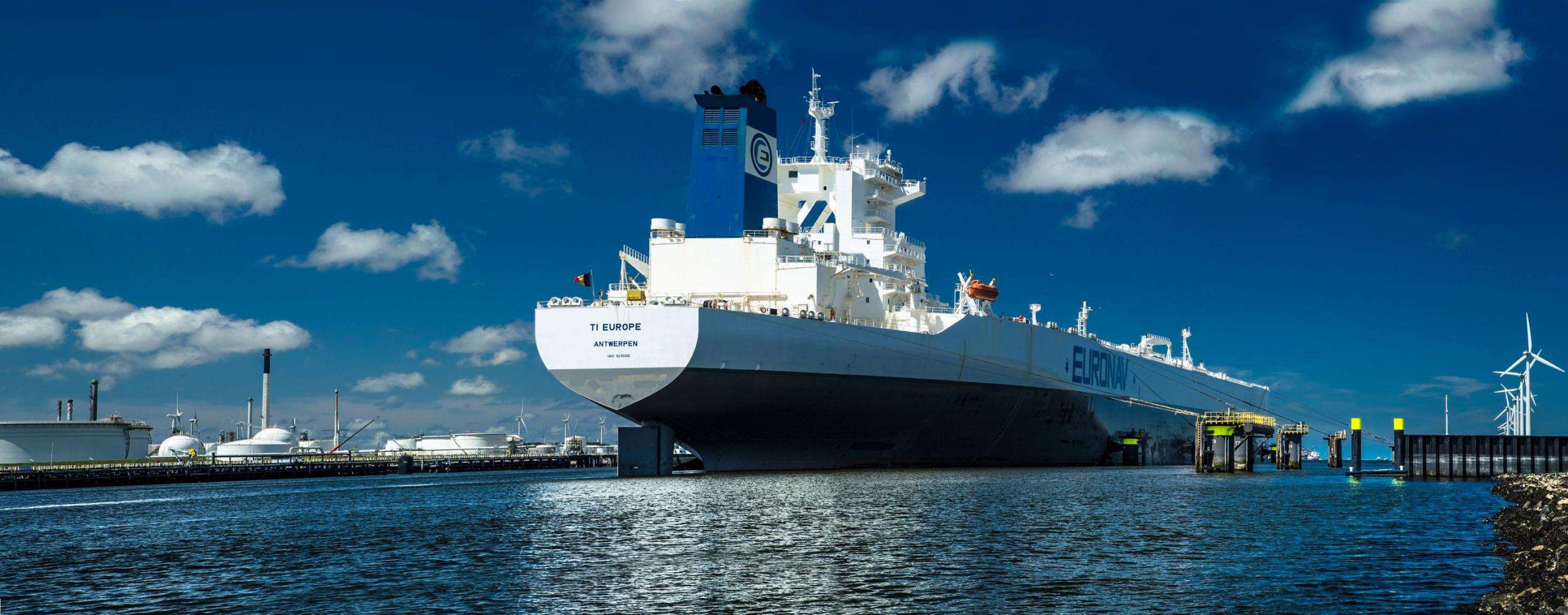China’s “come on”, the brightest star in the global ship fuel market

- Date: Oct 20, 2020
- Comments: no comments
- Categories: News
A few days ago, the large container ship “Santa Rovanessa” supplied 1,000 tons of low-sulfur bonded marine fuel oil from the Zhejiang Pilot Free Trade Zone in the Yangshan deep-water port area. This is the first Shanghai-Zhejiang cross-port zone and cross-customs zone international ship fuel supply pilot business, which adds to the counterattack of the Chinese ship fuel market.
According to recent data from the General Administration of Customs, as an important part of the fuel oil market and a major consumer sector, China’s marine fuel supply market in the first half of the year has overcome the impact of the epidemic and achieved double-digit growth against the trend against the backdrop of overall weak global market demand. The most attention-grabbing regions in the global marine fuel supply market.
Tian Ming, deputy general manager of the Enterprise Development Management Department of China Marine Fuel Co., Ltd., said at the recent 2020 National Petroleum and Chemical Industry Economic Situation Analysis Meeting that as the sales scale of China’s marine fuel supply market continues to expand and the free trade zone dividends are gradually released It is expected that the competitiveness of China’s marine fuel supply market in East Asia will increase rapidly, and it is expected to become a low-sulfur marine fuel oil pricing center in the global marine fuel oil market and a low-sulfur marine fuel oil pricing center in East Asia, attracting Singapore, South Korea, Japan and other neighboring countries as a priority choice Come on in China. Tian Ming pointed out that among China’s marine fuel oil, the supply of bonded marine fuel oil in the first half of the year was 7.24 million tons, an increase of 1.16 million tons over the same period last year, an increase of 19%, achieving growth against the trend. Consumption in April and May maintained a growth rate of more than 30%, which was 20% higher than that of Singapore.
“Blowout” created by “Two New Deals”
Since the beginning of this year, the number of ships supplied by oil companies in the Dalian Free Trade Zone has increased by 73% compared with last year, and the volume of oil supplied by a single time has increased by 140% year-on-year. Affected by the new crown pneumonia epidemic, the overall domestic and international shipping industry business Despite the decline, the ship fuel oil market in the Dalian Free Trade Area still achieved substantial growth against the trend, thanks to the “Two New Deals” first introduced by the Dalian Free Trade Area in the country.
On November 12, 2019, the Dalian Free Trade Zone Management Committee and Beiliang Port Customs took the lead in launching two new models of bonded vessel fuel supply supervision, namely “collection, distribution, supply” and “two warehouse adjustments,” based on corporate needs. . This new supervision model not only effectively improves the fuel supply efficiency, but also saves a lot of operating costs for ship fuel supply companies and brings direct benefits.
The supervision model of “collection and distribution of supply” is that the supplier can apply for centralized distribution and then supply oil in batches according to actual orders. The customs shall supervise the entry and exit of the warehouse and ship supply in accordance with relevant regulations, and carry out the verification and cancellation registration of the data exiting the warehouse based on the actual fuel supply records. The company’s fuel supply method will be more flexible and convenient. Through the merger application process, the centralized approval process will greatly reduce the waiting time and the number of in and outs of the supply service ship, avoiding fuel consumption, significantly reducing the company’s operating costs, and improving the company’s fuel supply service. Timeliness, convenience, rationality and scientificity have effectively improved the competitiveness of oil companies in the oil supply market. Under the supervision model of “collection and distribution of supply”, the previous supply of 1,000 vessels only needed 143 vessels to complete, and the reduction ratio reached 85.7%.
The “two warehouses transfer and use” supervision model optimizes the integration of bonded warehouses and export-supervised warehouses. Enterprises can dynamically adjust the capacity of bonded warehouses and export-supervised warehouses according to actual needs to achieve the superposition of the policies and functions of the two warehouses. In this mode, the storage method is more flexible, which improves the utilization rate of storage tanks and reduces the vacancy rate. This action can save enterprises at least 4.2 million yuan in storage rents and transfer costs per year.
Effective February 1 this year, the state has implemented an export tax rebate policy for fuel oil refilled by ships on international voyages in coastal ports of my country. The Dalian Free Trade Zone superimposes the policies of “collection and distribution of supply”, “two warehouses adjustment” and “export tax rebate for marine fuel oil”, realizing the expansion of the policies and functions of bonded warehouses and export supervision warehouses. Supplying ships in batches completely opened up the “last mile” for domestically produced fuel oil to be supplied to ships on international voyages.
It is understood that as of August this year, Beiliang Port Customs has completed 62 batches of fuel oil export warehousing of 5 refining companies, including Dagang Petrochemical, Dalian Petrochemical, North China Petrochemical, Liaoning Petrochemical, and Liaoyang Petrochemical, with a value of 727 million. RMB 94.51 million in export tax rebates.
According to incomplete statistics, global marine oil consumption is about 280 million tons per year, mainly in the Asia-Pacific region. Among them, the Asian marine oil consumption accounts for 64% of the global total. Singapore’s marine oil consumption is nearly 50 million tons, accounting for one-sixth of the total. It has long been ranked first in the world, and China’s marine oil consumption accounts for 7 percent. %about. In 2017, China’s Zhejiang Free Trade Zone vigorously developed the fuel supply business of bonded ships and actively expanded bonded ship fuel in Shandong, Hebei, Hainan and other free trade zones. The growth rate of bonded ship fuel consumption at Chinese ports was higher than that in Singapore, especially since 2020 The decentralization of the general trade export tax rebate policy for fuel oil is good for the growth of bonded vessels to a higher level, far exceeding Singapore’s 20%.
Supply ushered in a new situation
Compared with neighboring countries, China is the third largest ship fueling center in Asia after Singapore and Fujairah in the Middle East. With the continuous improvement of port infrastructure, China’s bonded oil supply logistics model is also constantly innovating and changing. The major fuel suppliers have adopted an intensive logistics model of importing large ships, unloading at large terminals, storage at large oil depots, and supplying large-tonnage barges, which greatly reduced the cost of fuel supply, and the price difference with the Singapore market has been narrowing, which is basically lower than that of Japan and South Korea. Prices and competitiveness in the Northeast Asian ship fuel supply market have continued to increase, and the scale of fuel supply has also steadily picked up.
Singapore is the supply center of the global ship fuel market, with an annual fuel supply of more than 40 million tons. Previously, due to the high price of China’s marine fuel oil and weak market competitiveness, the main source of procurement was Singapore.
However, in the first half of the year, Singapore’s fuel oil depot continued to be at a high level, and at the same time, affected by the continued low price of crude oil, the price of its low-sulfur fuel oil dropped significantly. As of June 30, the average price of 0.5% low-sulfur fuel oil in Singapore was US$315/ton, down 42% year-on-year, while the overall price in China fell during the same period.
“Since China started mass production of low-sulfur ships in March, the price gap between Singapore and China has shrunk significantly, breaking the previous situation of US$20-30/ton higher than the Singapore market. The average price of China’s bonded marine oil in the second quarter was US$265/ton. The price advantage is lower than Singapore 3-5 US dollars/ton, which attracts more foreign ships to call at Chinese ports for refueling, which is good for the further expansion of the development space of bonded ships.” Jinlianchuang fuel analyst Shi Linlin said.
“At present, this is due to the general trade export exemption and refund of low-sulfur marine fuel oil and export quota management policies, which have prompted large state-owned enterprises to actively deploy to ensure a stable supply of low-sulfur resources, and greatly mobilized the production of low-sulfur in my country’s refineries. The enthusiasm of marine fuel has effectively promoted the rapid development of the marine fuel supply industry this year, and also broke the long-term dependence of domestic bonded marine fuel oil on imports.” Tian Ming said.
According to reports, 2020 will be a year of substantial changes in China’s bonded marine fuel oil market. Under the low-sulfur trend, the fuel oil export tax rebate policy was formally implemented on February 1, and then my country’s low-sulfur marine fuel oil products were officially included in the export license management goods, and the export quota management system was implemented.
With the support of relevant policies, the overall changes in China’s bonded marine fuel market in the first half of the year were obvious. The main manifestations were: domestic refineries’ low-sulfur marine fuel production capacity increased by leaps and bounds, and import dependence was reversed. Low-sulfur fuel oil futures helped the fuel oil market to emerge.
According to statistics, the total domestic low-sulfur ship fuel production capacity was at 13.1 million tons from January to June, of which 28 refineries have achieved low-sulfur ship fuel production/mixing and delivery. Sinopec and PetroChina accounted for 47.8% and 47.8% of the production capacity respectively. 18.3% level.
“With the acceleration of China’s planned production of low-sulfur marine fuel oil, the price advantage of marine fuel oil will force China to transform from a traditional low-sulfur marine fuel importer to a self-sufficient producer.” Shi Linlin said.
“Ships are an important carrier of maritime trade and transportation, and they are also an important source of pollution from the shipping industry.” Huang Xiaowen said that most of the pollution caused by maritime transportation, including sulfur oxides, nitrogen oxides, carbon dioxide and particulate matter, are mostly sources. For marine fuel. In order to cope with climate warming and reduce greenhouse gas emissions from the shipping industry, the International Maritime Organization (IMO) adopted the world’s first shipping industry greenhouse gas emission reduction strategy in April 2018, and proposed that the total annual greenhouse gas emissions by 2050 will be compared with 2008. Reduce by at least 50% compared with the year, and strive to gradually achieve the zero-carbon goal. The selection of clean new energy or new power technology will be one of the important ways for the shipping industry to achieve the ultimate emission reduction target. In recent years, marine fuel power has developed in the direction of diversification, cleanliness, and low carbon. In particular, the technological applications of alternative energy sources such as LNG, methanol, and LPG are changing rapidly.
The price advantage is gradually showing up
Why is the price advantage of China’s ship fuel market gradually showing?
Huang Xiaowen, deputy general manager of China COSCO Shipping Group Co., Ltd., believes that the Shanghai International Energy Center’s launch of the low-sulfur fuel oil futures contract has timely adapted to the development needs of my country’s marine oil supply industry.
Tian Ming pointed out that while the price advantage continues to be prominent, the price of low-sulfur fuel oil on the Shanghai Futures Exchange has “surprised” and has become an important regional benchmark price. The supply price of bonded marine fuel oil at Zhoushan Port is the same as that of Singapore, with orders of more than 1,000 tons. Flat or even lower with Singapore has become the norm.
“Now, the Shanghai International Energy Center has officially launched a low-sulfur fuel oil futures contract. This product has timely adapted to the development needs of my country’s marine fuel oil industry.” Huang Xiaowen emphasized that this will also help shipping companies and marine fuel oil companies to actively use low-sulfur fuel oil. Sulfur fuel oil futures contracts are hedged to better meet the risk management needs of fuel oil industry chain companies, strengthen the pricing power of my country’s bonded marine fuel industry, and promote the construction of a clean, low-carbon, safe and efficient energy system in my country.
Many people in the industry believe that from the supply side, first, my country’s oil refining capacity is huge, and its scale has gained a competitive advantage; the refinery’s direct refining production has more guaranteed fuel quality. The tax rebate policy for bonded marine fuel oil has stimulated the enthusiasm for investment and transformation of refineries, attracting more and more refineries to join the production force, reducing the cost of refineries, and greatly improving the competitive advantage of my country’s bonded ship fuel supply. Fuel quality and supply are therefore better guaranteed in terms of stability.
“In Singapore’s procurement of raw materials from all over the world, there is a problem of uneven quality and the risk of “incompatibility” of raw materials. We integrate resources from state-owned enterprises or large-scale integrated refineries to reconcile, with greater controllability and better quality. It is guaranteed.” Tian Ming said.
Second, most of China’s bunkering ports are adjacent to main refineries, with obvious advantages in logistics costs, avoiding uncertainties in shipping schedules, and greatly improving resource guarantee capabilities.
“By delivering marine fuel oil from domestic refineries, major ship fueling companies are gradually getting rid of their dependence on imported resources. The supply model of’refinery production + blending and reconciliation + overseas imports’ has gradually realized resource diversification and market competition has accelerated. Promote the formation of price advantages.” Tian Ming said.
Third, Singapore’s oil giant Xinglong Trading Company filed for bankruptcy, which had a huge impact on the Singapore ship oil market, and part of the demand will be transferred to Chinese ports. This is also a rare opportunity for the rapid development of the Chinese ship oil market.
At present, more and more ports have started the construction of bonded vessel refueling bases. For example, Zhoushan has made every effort to become a ship refueling center in Northeast Asia; Qingdao Port has successfully opened up a low-sulfur marine fuel oil collection port logistics channel integrating waterways, railways and highways at Qingdao Port, and launched a “collection, distribution, and supply” supervision model to create ” “Northern Ship Oil Supply Base”.
Tian Ming predicts that in the future, the traditional production and sales model featuring global procurement, centralized production, and global distribution in the marine fuel supply market will continue to transform to a new model of “near shore procurement, nearby production, and local sales”. The global market demand will continue to increase. Trending towards the agglomeration of East Asian ports, China’s million-ton-class ports will be Zhoushan, Shanghai, Qingdao and Ningbo, which have the opportunity to become the new ship refueling center in East Asia.
“The fuel demand of state-owned shipping companies such as COSCO Shipping and China Merchants is as high as 10 million tons. If you choose to refuel at domestic ports, you can get high-quality and low-cost fuel. As the country gradually introduces port and shipping facilitation policies and implementation of preferential rates , Will attract more domestic and foreign shipping companies to choose to refuel in my country’s ports. The scale of my country’s foreign trade ship fuel supply is expected to double this year to 18-20 million tons.” Tian Ming believes.
Shi Linlin believes that in order to maintain the price advantage, the port should optimize the loading and unloading operations of the calling process and increase the investment in infrastructure and equipment, technology, and manpower to meet the growing demand.
Digital injection is imperative
The exploration of digitalization in the ship fuel supply industry is still in its infancy, and the overall digitalization is relatively low. Most oil suppliers, especially private oil suppliers, often rely on traditional WeChat groups to transmit information, use excel forms to keep accounts, and the management is very extensive. Take the Yangtze River water fuel supply industry as an example. There is no system service specifically for water gas stations on the market. Traditional general management software or onshore gas station systems are often applied, and only the most basic functions are implemented. The function cannot meet the needs of the development of ship fuel supply business.
Nanjing Dihai’s head of operations said: “Digital transformation and upgrading is an inevitable trend. The ship fuel intelligent digital management and marketing system launched by Sinochem Energy Technology is a particularly good choice.”
Since the operation of the intelligent digital management and marketing system for marine fuel supply in Dihai, Nanjing, the biggest change is that through digital operations, we have discovered parts that cannot be reached by experience, making business management and customer service more refined and efficient; and through the flow of data, Let data create value and assist decision-making.
In terms of management, data is objective and clear, and the essence of the business can be seen through complex and cumbersome processes, helping managers to reduce complexity, and transform empirical decision-making into digital decision-making. Take the flow of the Yangtze River as an example. Previously, Nanjing Dihai relied on manual counting of the number of ships passing by on the river; now, through the intelligent digital management and marketing system for ship fuel supply, the staff can clearly grasp the changes in the flow of the Yangtze River in real time, such as the flow after the end of the flood season. The recovery of the country and the impact of the typhoon on the flow of the Yangtze River can be seen directly. According to the changes in the flow, comparing the actual refueling volume of the gas station can clearly guide the operation of the gas station, and has a very good guiding significance for the judgment of the oil product pricing and purchase quantity. As the head of Nanjing Dihai’s operations said: “We have discovered laws and values from the data, especially those that cannot be seen and understood by the original experience.”







No Comments Yet.